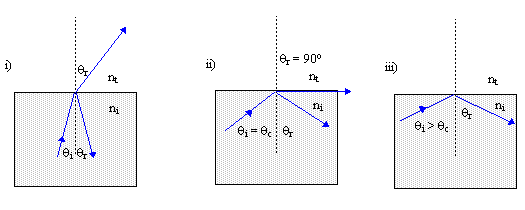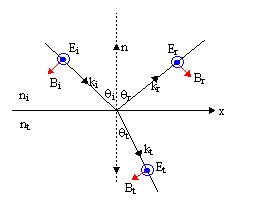Please wait while we process your payment
If you don't see it, please check your spam folder. Sometimes it can end up there.
If you don't see it, please check your spam folder. Sometimes it can end up there.
Please wait while we process your payment

By signing up you agree to our terms and privacy policy.
Don’t have an account? Subscribe now
Create Your Account
Sign up for your FREE 7-day trial
By signing up you agree to our terms and privacy policy.
Already have an account? Log in
Your Email
Choose Your Plan
Individual
Group Discount
Save over 50% with a SparkNotes PLUS Annual Plan!
 payment page
payment page
Purchasing SparkNotes PLUS for a group?
Get Annual Plans at a discount when you buy 2 or more!
Price
$24.99 $18.74 /subscription + tax
Subtotal $37.48 + tax
Save 25% on 2-49 accounts
Save 30% on 50-99 accounts
Want 100 or more? Contact us for a customized plan.
 payment page
payment page
Your Plan
Payment Details
Payment Summary
SparkNotes Plus
You'll be billed after your free trial ends.
7-Day Free Trial
Not Applicable
Renews July 25, 2025 July 18, 2025
Discounts (applied to next billing)
DUE NOW
US $0.00
SNPLUSROCKS20 | 20% Discount
This is not a valid promo code.
Discount Code (one code per order)
SparkNotes PLUS Annual Plan - Group Discount
Qty: 00
SparkNotes Plus subscription is $4.99/month or $24.99/year as selected above. The free trial period is the first 7 days of your subscription. TO CANCEL YOUR SUBSCRIPTION AND AVOID BEING CHARGED, YOU MUST CANCEL BEFORE THE END OF THE FREE TRIAL PERIOD. You may cancel your subscription on your Subscription and Billing page or contact Customer Support at custserv@bn.com. Your subscription will continue automatically once the free trial period is over. Free trial is available to new customers only.
Choose Your Plan
This site is protected by reCAPTCHA and the Google Privacy Policy and Terms of Service apply.
For the next 7 days, you'll have access to awesome PLUS stuff like AP English test prep, No Fear Shakespeare translations and audio, a note-taking tool, personalized dashboard, & much more!
You’ve successfully purchased a group discount. Your group members can use the joining link below to redeem their group membership. You'll also receive an email with the link.
Members will be prompted to log in or create an account to redeem their group membership.
Thanks for creating a SparkNotes account! Continue to start your free trial.
We're sorry, we could not create your account. SparkNotes PLUS is not available in your country. See what countries we’re in.
There was an error creating your account. Please check your payment details and try again.
Please wait while we process your payment

Your PLUS subscription has expired
Please wait while we process your payment
Please wait while we process your payment

Refraction
Imagine a beam of light in a dense medium incident on an interface with a vacuum (or any less dense medium). For small angles of incidence we know that some of the beam will be reflected and some transmitted into the vacuum. If we increase the angle of incidence, however, the angle the transmitted beam makes with the normal, θt, increases at a greater rate. We know this because from Snell's Law we have:
sinθi =  sinθt sinθt |
 < 1, so θt > θi.
Eventually it reaches the situation where θt = 90o and the transmitted beam just grazes the
surface. If θi is increased still further, the transmitted beam disappears. This is illustrated
in :
< 1, so θt > θi.
Eventually it reaches the situation where θt = 90o and the transmitted beam just grazes the
surface. If θi is increased still further, the transmitted beam disappears. This is illustrated
in :

sinθc =  sin 90o = sin 90o =  |
Although we know that a wave incident on an interface will be partially reflected and partially
transmitted along certain paths, we do not know what proportion of the energy of the ray will take
each path. We can use Maxwell's Equations to help us solve this problem. Consider the
diagram , in which the electric field is perpendicular to the plane of incidence.

 . The other relevant boundary condition in this case is that the perpendicular component of
the magnetic field divided by the permeability,
. The other relevant boundary condition in this case is that the perpendicular component of
the magnetic field divided by the permeability,  . Thus:
. Thus:
 + +  = =  |
 . We can use these three equations to find the two ratios
. We can use these three equations to find the two ratios  and
and
 . The first of these is known as râä¥, the amplitude reflection coefficient,
and the second as tâä¥, the amplitude transmission coefficient. These equations tell us the
relative amplitudes of the reflected and transmitted rays for light incident on an interface at some angle
θi. When the permeabilities of the two media are taken to be both equal to μ0, which is usually
true to a good approximation, we find:
. The first of these is known as râä¥, the amplitude reflection coefficient,
and the second as tâä¥, the amplitude transmission coefficient. These equations tell us the
relative amplitudes of the reflected and transmitted rays for light incident on an interface at some angle
θi. When the permeabilities of the two media are taken to be both equal to μ0, which is usually
true to a good approximation, we find:
| râä¥ | âÉá |    = =  | |
| tâä¥ | âÉá |    = =  |
| r || | = |  | |
| t || | = |  |
Please wait while we process your payment

